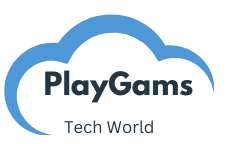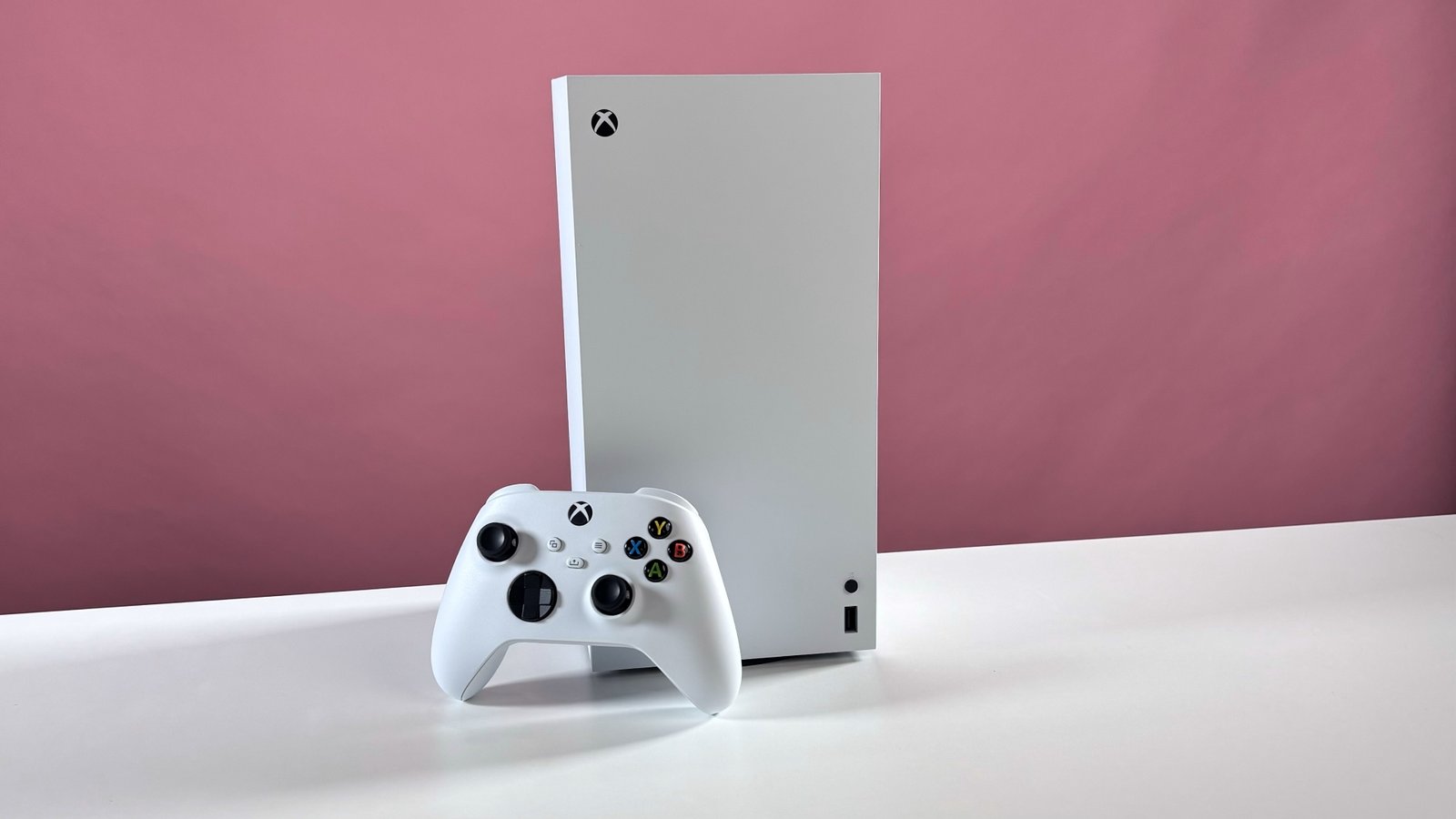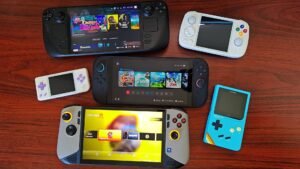The gaming industry stands at the precipice of another revolutionary leap. As we move deeper into the current console generation, whispers and speculation about the next wave of gaming hardware are growing louder. Major console manufacturers are already laying the groundwork for what could be the most significant generational shift in gaming history.
For millions of gamers worldwide, staying informed about upcoming console releases isn’t just about satisfying curiosity—it’s about making informed purchasing decisions, understanding where the industry is heading, and preparing for the future of interactive entertainment. The next generation of consoles promises to deliver unprecedented performance, innovative features, and gaming experiences that could redefine how we play.
This comprehensive overview examines everything we know about the gaming consoles expected to arrive in 2025, from confirmed developments to credible rumors and community expectations. Whether you’re a casual gamer or an enthusiast planning your next major purchase, understanding these upcoming releases will help you navigate the rapidly evolving gaming landscape.
Console Manufacturers and Their Strategic Vision
Sony’s PlayStation Evolution
Sony has consistently demonstrated its commitment to pushing gaming boundaries with each PlayStation iteration. Industry analysts suggest that the company is already deep into research and development for the PlayStation 6, building on the success of the PS5’s innovative DualSense controller and lightning-fast SSD architecture.
Recent patent filings from Sony Interactive Entertainment hint at advanced haptic feedback systems that could extend beyond controllers to encompass entire gaming environments. The company has also invested heavily in virtual reality technology through the PlayStation VR2, suggesting that immersive experiences will play a crucial role in their next-generation strategy.
Microsoft’s Xbox Expansion
Microsoft’s approach to next-generation gaming extends far beyond traditional console hardware. The company’s Xbox Game Pass ecosystem and cloud gaming initiatives through Xbox Cloud Gaming signal a potential shift toward service-based gaming experiences rather than purely hardware-driven ones.
Recent statements from Xbox leadership indicate a focus on creating a unified gaming experience across multiple devices. This suggests that the next Xbox console might serve as a premium gaming hub while maintaining compatibility with a broader ecosystem of devices, from mobile phones to smart TVs.
Nintendo’s Innovation Path
Nintendo has consistently marched to the beat of its own drum, prioritizing innovative gameplay experiences over raw processing power. The overwhelming success of the Nintendo Switch has established the hybrid console concept as a viable alternative to traditional home gaming systems.
Industry insiders speculate that Nintendo’s next console iteration will build upon the Switch’s portable-home gaming concept while incorporating new technologies that enhance both docked and handheld experiences. The company’s focus on family-friendly gaming and unique hardware features suggests that their 2025 offering will likely surprise the market once again.
Expected Hardware and Software Innovations
Processing Power Breakthroughs
The next generation of gaming consoles is expected to leverage cutting-edge processor technology, potentially incorporating custom silicon based on 3-nanometer manufacturing processes. This advancement could deliver processing power that makes current-generation consoles look modest by comparison.
Graphics processing units in these upcoming systems are anticipated to support real-time ray tracing at higher resolutions and frame rates, potentially enabling 8K gaming experiences for the first time in console history. Advanced AI acceleration hardware could also become standard, enabling more sophisticated game mechanics and procedural content generation.
Storage and Memory Evolution
Solid-state drive technology will likely see significant improvements by 2025, with potentially faster access speeds and larger capacities becoming economically viable for console manufacturers. This could eliminate loading screens entirely and enable more seamless world-streaming in open-world games.
Memory architecture improvements could support significantly higher-resolution textures and more complex game worlds, allowing developers to create experiences that were previously impossible on console hardware.
Software Platform Advancements
Next-generation consoles are expected to feature more sophisticated operating systems that seamlessly integrate gaming, entertainment, and social features. Enhanced AI assistants could help players discover new games, optimize settings automatically, and provide personalized gaming recommendations.
Cross-platform compatibility and cloud save synchronization are likely to become standard features, allowing players to continue their gaming experiences across multiple devices without interruption.
Leaks and Credible Industry Rumors
Development Kit Speculation
Several reliable gaming industry sources have reported sightings of development kits that don’t match current-generation hardware specifications. These reports suggest that at least one major manufacturer is already distributing early development hardware to select studios.
While specific details remain scarce, these reports consistently mention significantly improved performance metrics and new input methods that could revolutionize how players interact with games.
Manufacturing Partnership Changes
Recent shifts in manufacturing partnerships among major console makers have sparked speculation about new hardware directions. Changes in supplier relationships often indicate significant hardware redesigns or the adoption of new technologies.
These business developments suggest that the next generation of consoles might incorporate technologies or design approaches that differ substantially from current systems.
Gaming Community Expectations and Desires
Performance and Visual Fidelity
The gaming community has consistently expressed desire for higher frame rates and improved visual quality. Many players prioritize smooth 60fps gameplay over higher resolutions, suggesting that console manufacturers might focus on delivering consistent performance rather than pursuing specification numbers alone.
Ray tracing capabilities have become increasingly important to enthusiasts, who expect this technology to become more accessible and widespread in next-generation systems.
Backward Compatibility and Game Preservation
Players have shown strong appreciation for backward compatibility features, viewing them as essential for preserving their game libraries across console generations. This community preference suggests that upcoming consoles will likely prioritize compatibility with existing game catalogs.
Digital game library preservation has become a significant concern, with players expecting their purchased games to remain accessible across hardware generations.
User Experience Improvements
Gamers consistently request faster boot times, more intuitive user interfaces, and better integration with streaming and content creation tools. These preferences indicate that next-generation consoles will need to excel not just in gaming performance but also in overall user experience design.
Market Impact and Industry Dynamics
Competitive Landscape Shifts
The next generation of consoles will likely reshape competitive dynamics within the gaming industry. Traditional console wars may evolve into broader ecosystem competitions, encompassing game libraries, services, and cross-device experiences.
Subscription gaming services and cloud gaming platforms are expected to play increasingly important roles in consumer purchasing decisions, potentially influencing how manufacturers position their hardware offerings.
Economic Considerations
Rising development costs and supply chain complexities may influence console pricing strategies for the 2025 generation. Manufacturers might adopt new business models that balance hardware costs with service revenue streams.
The global economic climate and semiconductor availability will likely impact both release timing and initial pricing for next-generation systems.
Release Timeline and Pricing Projections
Historical Pattern Analysis
Based on previous console generation cycles, major manufacturers typically release new hardware every six to eight years. This timeline suggests that the next generation could begin arriving in the 2025-2027 timeframe, with 2025 marking the earliest possible entry point.
Early adopter pricing for next-generation consoles will likely reflect the increased cost of cutting-edge technology, potentially positioning premium models at higher price points than current systems.
Market Readiness Factors
Consumer adoption of 4K and 8K displays, along with the maturity of technologies like ray tracing and high-speed internet connections, will influence optimal release timing for next-generation hardware.
Frequently Asked Questions
What are the expected release dates for the new gaming consoles in 2025?
While no official announcements have been made, industry patterns suggest that at least one major manufacturer might unveil new hardware during 2025. Sony and Microsoft typically follow six-to-eight-year console cycles, making 2025-2027 the probable window for next-generation reveals. Nintendo operates on its own timeline and could announce new hardware at any point.
What kind of graphical improvements can we expect in 2025 consoles?
Next-generation consoles are expected to support native 4K gaming at higher frame rates, with some systems potentially offering 8K capabilities for select titles. Real-time ray tracing will likely become standard across all price tiers, and we may see implementation of advanced features like neural rendering and AI-enhanced graphics processing.
How will cloud gaming impact the design of new consoles?
Cloud gaming integration will likely influence console design by enabling hybrid experiences where local processing handles latency-sensitive tasks while cloud computing manages complex calculations. This could result in more efficient hardware designs and new gameplay possibilities that seamlessly blend local and cloud-based processing.
Will the new consoles maintain backward compatibility with current games?
Given the positive reception of backward compatibility features in current-generation systems, future consoles will almost certainly support existing game libraries. Manufacturers understand that preserving players’ digital collections is crucial for maintaining customer loyalty during generational transitions.
What role will AI play in upcoming gaming consoles?
Artificial intelligence will likely become deeply integrated into next-generation systems, powering features like dynamic difficulty adjustment, procedural content generation, and personalized game recommendations. AI acceleration hardware may become standard, enabling more sophisticated non-player character behaviors and real-time game world generation.
The Future of Gaming Awaits
The upcoming generation of gaming consoles represents more than just incremental hardware improvements—they promise to fundamentally transform how we experience interactive entertainment. From revolutionary processing capabilities to innovative input methods and seamless cross-device integration, these systems will likely set new standards for the entire gaming industry.
As we await official announcements and concrete details, the excitement within the gaming community continues to build. The combination of advancing technology, creative developer ambitions, and evolving player expectations suggests that 2025 could mark the beginning of gaming’s most exciting era yet. Stay tuned for updates as manufacturers begin revealing their next-generation visions.




